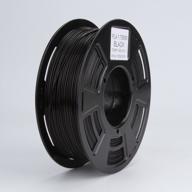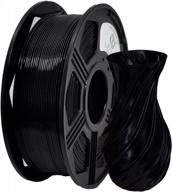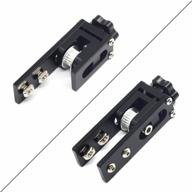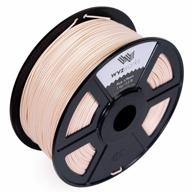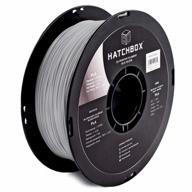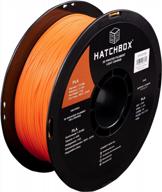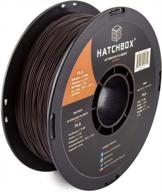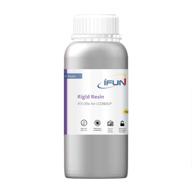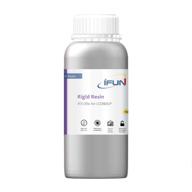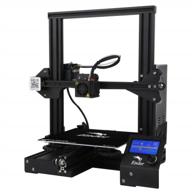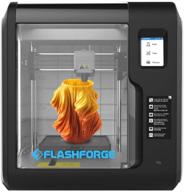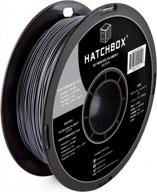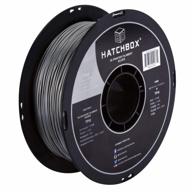Similar products
How to get the best print quality with HATCHBOX PLA filament?
HATCHBOX PLA filament is one of the most popular materials for 3D printing due to its ease of printing and good surface finish. However, to get the highest quality prints from HATCHBOX PLA, there are some important considerations.
Use the Recommended Print Settings
HATCHBOX provides recommended print settings on their product pages and these are a great starting point. For PLA, they recommend:
- Nozzle Temperature: 190°C - 220°C
- Bed Temperature: 45°C - 60°C
- Print Speed: 40mm/s - 60mm/s
Tune your slicer profile to match these settings, then tweak as needed for your particular printer and environment.
Optimize Nozzle Temperature
Nozzle temperature has a big impact on print quality. Too low, and you'll get clogs and poor layer adhesion. Too high, and the PLA can "ooze" causing stringing.
Start with a temperature tower print to dial in the optimal nozzle temp for your HATCHBOX PLA spool. 190°C is a good starting point.
Use the Right Bed Surface
PLA sticks well to PEI print surfaces. For glass or other surfaces, use an adhesive like glue stick or hairspray to improve first layer adhesion.
A brim can also help anchor the edges of a print to the bed.
Slow Down for Small Details
Faster print speeds can cause small details and overhangs to warp or deform. For critical small features, slow the print speed to 30-40mm/s to improve quality.
Top products in 🖨️ 3D Printing Supplies
Keep Filament Dry
Moisture causes popping and poor layer adhesion. Keep HATCHBOX PLA in a sealed bag with desiccant when not printing. Store filament in a dry box for best results.
Following these tips will help you dial in optimal settings for great looking prints with HATCHBOX PLA!
How to prevent stringing and oozing when printing with HATCHBOX PLA?
Stringing and oozing are common issues that can occur when 3D printing with any filament, including HATCHBOX PLA. Here are some tips to prevent stringing and oozing:
Optimize Nozzle Temperature
The nozzle temperature has a big impact on stringing. If it's too high, the PLA will be more molten and prone to oozing. Try lowering the temperature in 5-10 degree increments until stringing is reduced while still getting good layer adhesion.
Retraction Settings
Retraction helps prevent oozing by pulling the filament back from the nozzle in between print moves. For PLA:
- Distance: 4-6mm
- Speed: 40-60mm/s
Higher retraction distance and speed helps but can also lead to clogs, so find the right balance.
Print Speed
Faster print speeds decrease the time for ooze to accumulate so try increasing speed to 60mm/s or higher for the best print quality.
Nozzle Wipe
Enable nozzle wiping in your slicer to have the nozzle brush against the print to wipe off ooze.
Coasting
Coasting stops extrusion before the end of a print move allowing pressure to subside to prevent oozing.
Avoid Small Layer Heights
Using very small layer heights like 0.08mm can increase stringing. Try 0.12-0.2mm for cleaner prints.
Dry Filament
Wet filament is more prone to popping and stringing. Keep your HATCHBOX PLA in a sealed bag with desiccant.
Dialing in the right settings for your printer and environment is key to preventing stringing and oozing with HATCHBOX PLA. Following these tips will help you get clean, high quality prints.
Another interesting products
How to optimize print settings for HATCHBOX PLA filament?
HATCHBOX PLA is one of the most popular 3D printing filaments due to its reliability and print quality. However, dialing in the optimal settings for your particular printer is crucial for getting the best results.
Nozzle and Bed Temperature
PLA prints best at nozzle temps between 190°C – 220°C. Start at 190°C and increase in 5° increments until you get good layer adhesion without excessive stringing. Bed temperature should be 45°C – 60°C to prevent warping.
Print Speed
HATCHBOX PLA can print nicely at 50-60 mm/s, but you may need to slow down for intricate prints:
- Outer walls: 30-40 mm/s
- Small features: 20-30 mm/s
Retraction Settings
For PLA, a retraction distance of 4-6mm and speed of 40-60mm/s works well. Increase distance if you have oozing.
Layer Height
A layer height between 0.1mm – 0.2mm gives a great balance of speed and resolution for PLA. For detailed prints, use 0.1mm.
Infill
20% infill is good for most functional prints. You can increase to 40% for models that need more strength. Use 3-4 top/bottom layers for a smoother surface.
Supports
PLA can print with minimal supports. Use touching build plate only if possible and low density tree supports if needed.
Cooling
PLA needs good cooling. Set your fan to 100% after the first few layers. Slow down for small overhangs if needed.
Bed Adhesion
For glass or PEI beds, PLA sticks well without adhesives. Add a brim for large prints. On other surfaces, use glue stick or hairspray.
Take the time to fine-tune these core settings for your printer and you'll be able to achieve excellent print quality with HATCHBOX PLA consistently.
How to store HATCHBOX PLA filament to prevent moisture absorption?
Moisture absorption is one of the main causes of poor print quality with PLA filament. Here are some tips for proper storage of HATCHBOX PLA to keep it dry:
Use a Sealed Container
Store your HATCHBOX PLA filament in an airtight container like a plastic bin or bucket with a gasket seal lid. This prevents ambient moisture in the air from being absorbed by the filament.
Use Desiccant
Place desiccant packs in your storage container to actively absorb any residual moisture. Silica gel or clay desiccant beads work well. Use 2-3 packs per 1kg of filament.
Vacuum Seal Spools
For long term storage, vacuum seal unused filament spools in plastic bags to remove air and prevent moisture absorption.
Store at Room Temperature
Avoid temperature extremes. Store your HATCHBOX PLA at 18-25°C / 65-77°F for optimal moisture protection.
Use a Dry Box
For the best results, store your filament in a dry box with humidity control. This keeps your filament ready for printing with no wait.
Replace Desiccant Regularly
Check desiccant packs monthly and replace when beads start changing color. Rechargeable desiccant can be dried in the oven.
Dry Filament Before Use
Especially if printing in humid conditions, always dehydrate HATCHBOX PLA at 40-50°C for 4-8 hours before printing to remove any absorbed moisture.
Following proper storage methods prevents moisture absorption into the filament, reducing popping and quality issues. Proper dry storage means better looking prints with HATCHBOX PLA!
How to choose the right nozzle temperature for HATCHBOX PLA filament?
Choosing the optimal nozzle temperature is crucial for getting great print quality with HATCHBOX PLA filament. Here are some tips for dialing in the right temp:
Start with Manufacturer Recommendations
HATCHBOX suggests a nozzle temp of 190°C to 220°C for their PLA. This gives you a starting point to tweak from.
Consider Environmental Factors
Ambient temperature in your print environment can impact results. You may need a slightly higher nozzle temp in a cooler room.
Do a Temperature Tower Test
Print a temperature tower to see the impact of different nozzle temps. This helps identify the optimal temp for bridging, overhangs, and adhesion.
Evaluate Stringing and Oozing
Higher temperatures lead to increased stringing. Lower the temp if you see excessive stringing or oozing.
Check Layer Adhesion
Poor layer adhesion is a sign of low nozzle temp. Increase in 5° increments until layers bond cleanly.
Assess Print Speed
Faster speeds may require higher nozzle temps to melt filament quickly. Reduce speed or increase temp if needed.
Watch for Clogs
Very low nozzle temps can lead to clogs. Increase temp if frequent clogging occurs.
Fine Tune for Each Filament
Different PLA filament colors and brands print best at different temps. Dial it in for each spool.
Take the time to experiment with 5°C increments across a range of print tests to find the sweet spot for your HATCHBOX PLA spools. This ensures you get fantastic looking prints every time.






